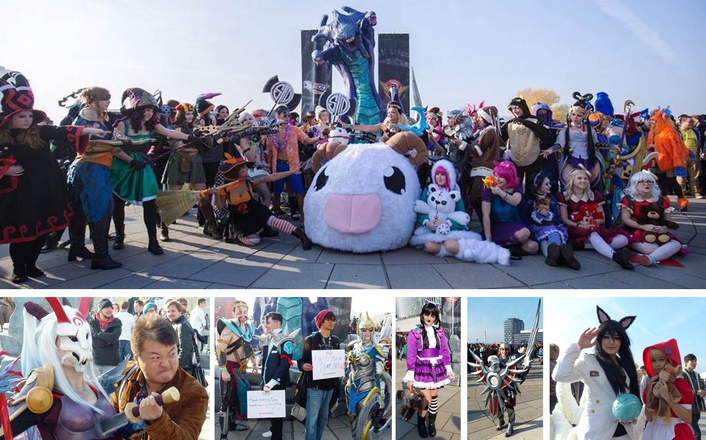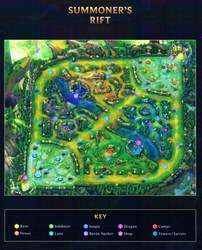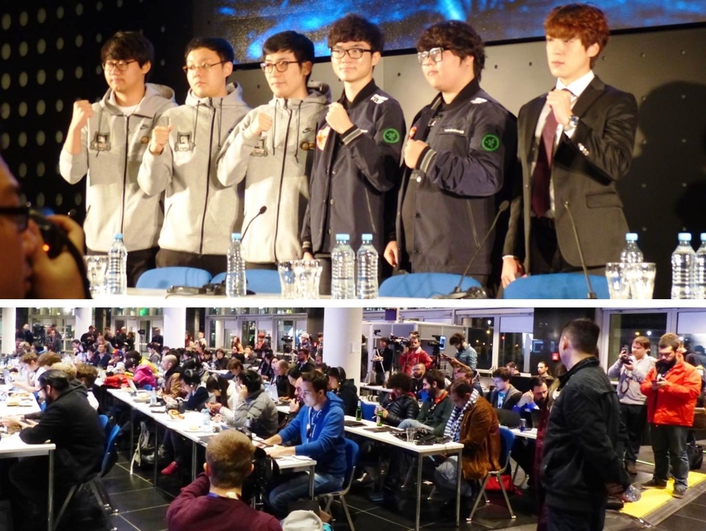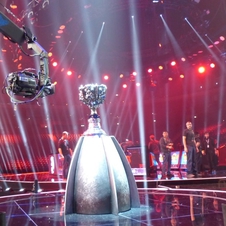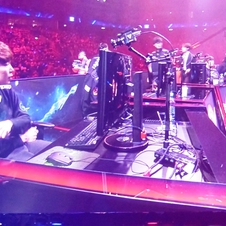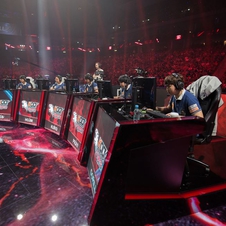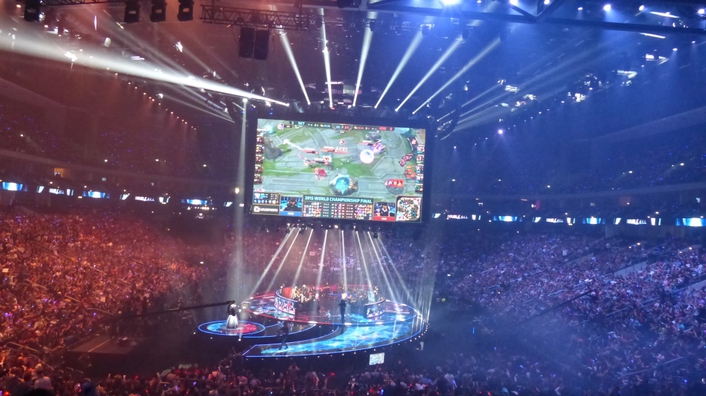League of Legends Final 2015 - Remote Production Berlin - Los Angeles
posted:
In League of Legends, players assume the role of an unseen "summoner" that controls a "champion" with unique abilities and battle against a team of other players or computer-controlled champions. The goal is usually to destroy the opposing team's "nexus", a structure which lies at the heart of a base protected by defensive structures. Each League of Legends match is discrete, with all champions starting off fairly weak but increasing in strength by accumulating items and experience over the course of the game.
advertisment
League of Legends was generally well received at release, and it has grown in popularity in the years since. By July 2012, League of Legends was the most played PC game in North America and Europe in terms of the number of hours played. As of January 2014, over 67 million people play League of Legends per month, 27 million per day, and over 7.5 million concurrently during peak hours.
League of Legends has an active and widespread competitive scene. In North America and Europe, Riot Games organizes the Championship Series, which consists of 10 professional teams in each continent. Similar regional competitions exist in China, South Korea, Taiwan, South America, and Southeast Asia. These regional competitions culminate with the annual World Championship, which since 2013, had a grand prize of $1 million and attracted 32 million viewers online. The 2014 and 2015 tournaments each gave out one of the largest prize pools in eSports history, at 2.3 million dollars.
Summoner's Rift
Summoner's Rift is the most popular map in League of Legends. On this map type, two teams of five players compete to destroy an enemy building called a Nexus, which is guarded by a number of defensive structures, towers, and defended by the enemy team. One nexus is located in each enemy base on opposite sides of the map, in the lower-right and upper-left hand corners. These structures continually create weak non-player characters known as minions, which advance toward the enemy base along three lanes: top, bottom and middle lanes. Players compete to advance these waves of minions into the enemy base, which allows them to destroy enemy structures, achieve intermediate objectives, and ultimately victory.
Between enemy lanes are more neutral areas of the map known as the Jungle and the River. The Jungle is arrayed in four quadrants and contains a variety of more powerful non-player characters known as Monsters. The River bisects the map from the upper-left to the lower-right-hand corners and contains three types of neutral Monsters, the Scuttle Crab, Dragon, and Baron Nashor.
advertisment
Each League of Legends match involves two teams attempting to destroy each other’s bases on a small game map while defending their own. Players control any one of 100 champions, including demon toads, golems, robots, gunmen and wizards, that are equipped with a wide variety of attacks and defenses. The World Championships are played in "Best of Five" mode. All teams are required to field a Head Coach in their competitive matches, who will stay on stage and speak with the team via voice-chat in the pick-ban phase of the game. This change makes the Head Coach an officially recognized member of a team that now consists of six members.
advertisment
The 2015 season started in October in Paris with the group matches (16 teams: 3 from North America, 3 from Europe, 3 from China, 3 from South Korea, 2 from South-East Asia and two with an international wild card), continued in London with the quarter-finals and in Brussels with the half-finals and was completed on 31st October in Berlin with SK Telecom accomplishing a feat no one has ever done before when they beat KOO Tigers in a 3-1 series in front of a packed house in the Mercedes-Benz Arena.
The final in Berlin consisted of three segments: The Opening - The Match Games - The Victory Ceremony.
At the center of the Mercedes Benz Arena an impressive 320m² stage was erected. It was built by Studio Hamburg and consisted of 1,196 video tiles (delivered by Mediatec) below the glass covered floor which was surrounded by 192 video tiles and 380m rope light.
advertisment
Above the floor PRG/XL Video has constructed a massive video square consisting of 1,279 video tiles. On 1.9km truss most of the 1,500 moving lights (including 300 Clay Paky Mythos) were positioned which consumed most of the 5,500 amps of required power. The lighting was controlled by grandMA lighting consoles while the content for the stage floor video tiles was produced on a Coolux Pandora's Box.
Audio and intercom (Riedel Artist matrix) was in the hands of 3G Live while 2CL Communications provided 115 Motorola systems to complete the system radios.
The overall responsibility was in the hands of Production Associates (PA). Together with TV Skyline PA took care for the set-up of the host broadcasting infrastructure, the integration of ISO cameras for the rights holding broadcasters from Korea (OGN) and China, as well as for the integration of the Riot Studio in Los Angeles via a remote production infrastructure.
advertisment
The Host Broadcasting Infrastructure
TV Skyline's HD8 together with PA's Flypack were the two center pieces of the production: HD8 for the host production and the PA Flypack for the Korean and Chinese broadcasters. A total of 27 cameras were positioned on the stage and around - 10x LMP HD1200 POV cameras on top of the 10 player monitors to get close-ups of the players during the match, 17x Ikegami cameras on Triangle jibs, as handheld cameras on stage or on tripods around the stage, in front or behind the analysts and the commentator studios. However the commentator box of OGN (Korea) was covered with Sony cameras. Vision mixing of all three signals was done on Snell Kahuna mixers.
advertisment
advertisment
The three independently mixed signals were send via fiber to the Riot Studio in Los Angeles. Here the Chinese signal was send via Asia Sat5 into China and then distributed via the internet inside of China to the Chinese spectators. The Korean signal was transferred to OGN and found its way to the Korean spectators via OGN's TV infrastructure. Riot's host broadcast signal was distributed from Los Angeles via the internet to all international spectators.
advertisment
The Remote Production at the Riot Studio
After the opening ceremony (directed by Jonathan X) the host production was switched from Berlin to Los Angeles. Therefore 20 more camera/audio/intercom signals were transferred via a 10G infrastructure to the Riot Studio where the game/matche signal was produced. The director Barbara Sherwood and her team in Los Angeles had direct access to the cameras in Berlin including the Riot commentators and the Riot analysts.
The transfer from the SDI platform to the ATP platform is a solution developed by PA and consists of Evertz Xenon and Lawo V__4 products. Due to the fact that the Mercedes Benz Arena has installed a fiber interface to the MTI Teleport the transfer of the production from Berlin to Los Angeles was straight forward. For control purposes nine return signals from Los Angeles were received in Berlin.
After the SK Telecom team had beaten the KOO Tigers 3-1 the host production was switched back from Los Angeles to Berlin and the director Jonathan X and his team took over for the presentation of the Victory Ceremony where more than 13 thousand fans enthusiastically cheered the winners.
The eSport Stars
League of Legends is the undisputed king of eSports, and with the Finals of the 2015 Worlds complete, attention begins to turn to 2016. With the massive infusion of money for eSports events comes the inevitable changes for teams of all shapes and budgets and the incredible grind that the top players in the world endure takes its toll, even though many of them are still teenagers. Money, pressure from competition, and demands for time and endorsements cause rosters to shift and teams to fold on a regular basis. Will SK Telecom defend their title next year? Will KOO return to form and perhaps get stronger? Will North American teams step up or fall further behind? Will European clubs regain their place at the top of the world? Will South America start to play its role?
Most of eSport stars are aged between 19 and 25. They've started this as a hobby, but now their salary and lifestyle allows them to experience things they never thought were possible.
Perhaps the biggest difference between traditional sports and eSports are the viewers. Unlike mainstream athletic competitions, which appeal to a broad range of demographics, consumers of eSports are overwhelmingly young. According to EEDAR (Electronic Entertainment Design and Research) over 70 percent of League of Legends (the most popular eSports game in terms of dollars and participants) viewers are males, and the vast majority of them are under 26. This means a couple of things, both of them appealing to advertisers looking to reach this young and lucrative market – the audience will grow as more youngsters are introduced, and as they get older, their purchasing power increases.
As of today there is not a lot of rock star halo outside of Korea. Here around the League of Legends players a huge cult is building up. Fans go crazy for them, they appear in TV ads, and are already more like Football, Soccer, Basketball, Cricket or Formula 1 champions.



